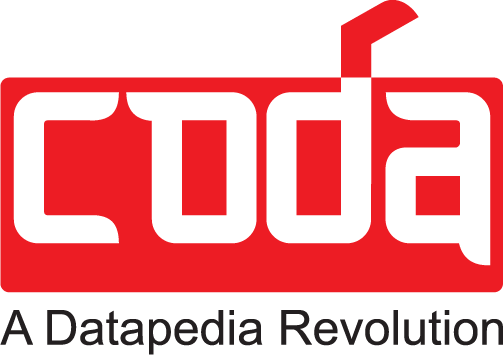In today’s digital era, cloud shift is no longer an option; it’s a strategic necessity for organizations aiming to achieve agility, scalability, and cost efficiency. Cloud shift inherently has challenges when it involves managing critical business data. Poor planning, hidden costs, and technical complexities often lead to migration inefficiencies and cost overruns. Let’s explore how organizations can overcome the migration overrun by up to 30% in our latest blog post.
What is Cloud Shift?
Cloud shift, or cloud migration, is transferring applications and data from one location, often a company’s private, on-site (“on-premises”) servers, to a public cloud provider’s servers or between different clouds. The key benefits of Cloud Shift include improving IT cost savings and enhancing performance, but other advantages like security and convenience exist.
Key benefits of cloud shift
Cost Savings:
Cloud shift reduces IT infrastructure costs more than on-premise storage expenses.
Enhanced Security:
Built-in security features in the cloud platform foster data privacy and safety measures.
Simplified Operations:
Cloud service providers (CSPs) reduce hardware and IT needs by handling updates, security, and scaling.
Top 5 cloud shift challenges leading to migration overruns in 2025
Managing Cloud-Costs
Effective planning is crucial for cloud services as it directly impacts financial risk. Organizations often underestimate cloud shift expenses and complex pricing models and even neglect cloud resource optimization at times.
Security and Compliance Risk in Cloud Shift
Moving sensitive data into the cloud poses a significant risk to security and compliance. Poor data governance during cloud shift opens doors to cyberattacks, data breaches, and regulatory penalties.
Minimizing Downtime
Reducing downtime is crucial for maintaining seamless operations during a cloud shift. However, many organizations overlook the complexities of migrating workloads and applications, leading to prolonged outages.
Identifying Technical Skill Gaps
Organizations are having a harder time hiring experts with the necessary skills to support contemporary cloud ecosystems as cloud computing continues to advance.
Legacy Systems
Legacy systems are outdated software and hardware still in use. Migrating them to the cloud poses significant challenges due to technical debt, as they often lack compatibility with modern architectural principles.

Struggling with Cloud Migration Challenges?
Let Codasol guide you with proven strategies to avoid overruns and ensure a seamless transition.
How do you overcome them?
Assess Pre-Migration Costs
Cost expenses can be predicted by certain tools and ensure frequent monitoring of cloud resources to cope with the workload demands.
Build Cloud Shift plan and Test Run
To reduce interruption, prioritize key apps and map dependencies between workloads. Use sandbox environments to identify possible bottlenecks and simulate the migration process.
Implement Cloud-training programs
Invest in training programs to upgrade employees’ cloud expertise. Furthermore, skill gaps can be bridged by partnering with cloud migration consultants or managed service providers.
Leverage Cloud Shift Automation Tools
Utilize automation tools like Google Cloud Migrate to streamline the migration process without relying on manual work.
Use a Hybrid-Cloud Strategy
For systems that cannot be fully migrated, move to hybrid cloud solutions that integrate on-premises and cloud environments. Gradually refactor or rearchitect legacy applications to make them cloud-ready.
Why do migration overruns happen during cloud shifts?
Inadequate Planning
Insufficient planning during cloud shift often results in challenges such as inconsistent or poorly standardized data, mismatched data structures, and incompatible formats. These issues disrupt workflows, create operational inefficiencies, and lead to costly errors, impacting cloud migration success.
Complex infrastructure
Organizations with data integration challenges and complex IT systems struggle to effectively align with the cloud strategy. This misalignment can result in data silos, integration bottlenecks, and delays in achieving a seamless data management framework in the cloud.
Vendor Lock-in
Relying on a single cloud provider risks data management by limiting flexibility and increasing costs. Proprietary tools and formats can complicate switching providers, while pricing changes or service limitations hinder adaptability, impacting seamless data operations.

Ready to Optimize Your Cloud Migration? Contact Codasol today for expert insights and customized solutions.
How to avoid cloud shift overruns?
Conduct a Cloud Migration Assessment
Perform a thorough inventory of applications, data, and workloads and Create a comprehensive migration plan, including timelines, resource requirements, and risk management strategies.
Create a Realistic Budget
Create a cloud budget to assume how much you will spend on cloud computing resources over a given time frame. By utilizing cloud automation, the manual effort needed to configure virtual machines and select resources is reduced.
Develop a clear vision
By developing and implementing a clear vision for your cloud environment, IT objectives are aligned. To prevent unwanted complexity, create and establish achievable goals. Adding to this, design a cloud architecture that syncs your current IT setup.
Utilize multiple cloud providers
Using multiple cloud providers reduces the risk of overdependence on a single vendor. A multi-cloud approach ensures your data and applications are compatible across platforms, making it easier to switch providers when needed and minimizing the risk of vendor lock-in.
Wrapping thoughts
At Codasol, we understand the complexities and challenges associated with cloud migration, particularly when it comes to data management. From inadequate planning and hidden costs to vendor lock-in and complex IT infrastructures, these hurdles can lead to costly migration overruns if not addressed effectively.
With our expertise in Master Data Management, Data Quality, and Governance, we help organizations navigate the cloud shift with confidence. Our tailored strategies, including comprehensive assessments, realistic budgeting, multi-cloud solutions, and automation tools, ensure a smooth migration process while minimizing risks.

Don’t let migration overruns hold back your cloud transformation.
Partner with Codasol to streamline your migration, reduce costs, and ensure seamless data management.


